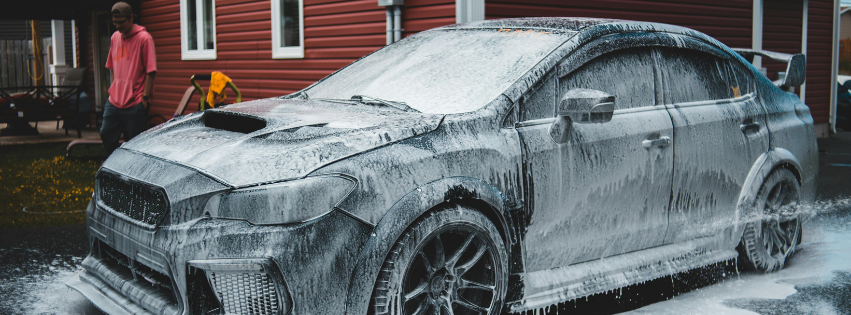Site Selection in Car Wash Management: The Foundation of Long-Term Success
Choosing the Right Location: The Key to a Profitable Car Wash Business

In the car wash business, location isn’t just everything—it’s the whole game. Choosing the right site determines how many cars you wash daily, how efficiently you operate, and ultimately, how profitable your business becomes. Before you invest in equipment or branding, you must first master the science—and art—of car wash site selection.
At Car Wash Management, we help entrepreneurs and investors identify the most strategic and high-performing sites for their car wash businesses. This process goes beyond finding a vacant lot; it’s about aligning data, demographics, and traffic patterns to drive consistent customer flow.
1. Why Site Selection Matters
A poor site can cripple even the best car wash setup. The right site, however, acts as an invisible marketing engine—drawing in spontaneous and repeat customers without extra advertising spend.
The key benefits of strategic site selection include:
- Higher vehicle traffic and daily washes
- Better visibility and accessibility
- Lower marketing costs due to natural customer flow
- Long-term profitability and scalability
Many car wash owners underestimate how dramatically foot (or wheel) traffic and visibility impact ROI. In fact, studies show that over 60% of car wash visits are impulse-based, meaning people stop when they see your site conveniently located.
2. Understanding Your Target Market
Before selecting a site, define your ideal customer profile. Are you targeting:
- Busy professionals in urban centers?
- Fleet owners and transport companies?
- Suburban households with multiple vehicles?
Once identified, analyze demographics, income levels, and vehicle ownership rates within a 3–5 km radius. Urban sites near offices or commercial complexes work well for express washes, while suburban or highway locations are ideal for full-service or self-serve car washes.
Tools like Google Maps, Waze, and local government traffic data can provide valuable insights into your potential market’s movement patterns.
3. Traffic Flow and Accessibility
A good site has high average daily traffic (ADT)—typically above 20,000 vehicles per day—and easy ingress and egress. Your site should be:
- On the “going-home” side of traffic flow (drivers prefer convenience on their return trip).
- Free from heavy congestion that could discourage entry or exit.
- Positioned at an intersection or curve for maximum visibility.
You can use platforms like Google Traffic and local Department of Public Works data to assess average daily traffic counts and peak hours.
4. Visibility and Signage Potential
Visibility is free advertising. Sites hidden behind large structures or blocked from view by trees or billboards drastically reduce spontaneous visits. Consider the following:
- The site should be visible from at least 150 meters away.
- Your signage rights (height, illumination, and placement) should comply with local zoning ordinances.
- Avoid sites overshadowed by larger establishments unless your sign can compete for attention.
Remember: even the best car wash technology can’t compensate for a poorly visible location.
5. Competition Analysis
Assessing nearby competitors gives you an edge. Too many car washes within a short radius can saturate the market, but a complete lack of competitors may signal weak demand.
Ask:
- How many car washes are within 5 km?
- What are their price points and services?
- Are they struggling with customer flow or expanding?
You can use platforms like Google Business Profiles and competitor analysis to map competition density and find your differentiation niche.
6. Zoning, Utilities, and Land Requirements
Once you’ve found a promising area, verify zoning regulations. Not every commercial lot allows car wash operations. You’ll need:
- Zoning clearance for car wash use
- Adequate water supply and proper drainage systems
- Electrical and wastewater management access
- Stormwater control compliance
Partnering with professionals like Car Wash Management engineering teams ensures your site meets all environmental and regulatory requirements before investment.
7. Lot Size and Site Layout
Space affects everything from wash bay design to traffic circulation. A good layout should accommodate:
- Entrance and exit flow without congestion
- Adequate vacuuming and drying zones
- Employee workspaces and chemical storage
As a general guide:
- Automatic car wash: minimum 6,000 sq. ft.
- Self-service bays: 1,200–1,500 sq. ft. per bay
- Full-service tunnel: 10,000–15,000 sq. ft.
A proper layout enhances efficiency, reduces labor costs, and improves the customer experience.
8. Environmental and Community Considerations
Modern customers value sustainability. Choose a site where you can implement eco-friendly systems like:
- Water reclamation systems
- Low-energy lighting and equipment
- Proper wastewater treatment
Being a responsible business also means ensuring your operations don’t disrupt local communities through noise or traffic. Aligning with sustainable practices strengthens your brand image and long-term reputation.
9. Professional Site Evaluation and Feasibility Study
Don’t rely on guesswork. Conduct a feasibility study that covers:
- Traffic and demographic analysis
- Site visit and topographic mapping
- Cost-benefit projections
- Construction and ROI timeline
At Car Wash Management, we provide comprehensive feasibility assessments and site validation—ensuring every chosen site aligns with your growth goals.
Conclusion: Setting the Stage for Success
Site selection is the cornerstone of every successful car wash operation. When done right, it creates a self-sustaining business that draws customers effortlessly and delivers strong returns for years. Whether you’re a first-time investor or scaling your existing operations, partnering with experienced consultants can save you from costly mistakes and fast-track your success.
Start your car wash journey the smart way—with the right site and expert guidance from Car Wash Management.
